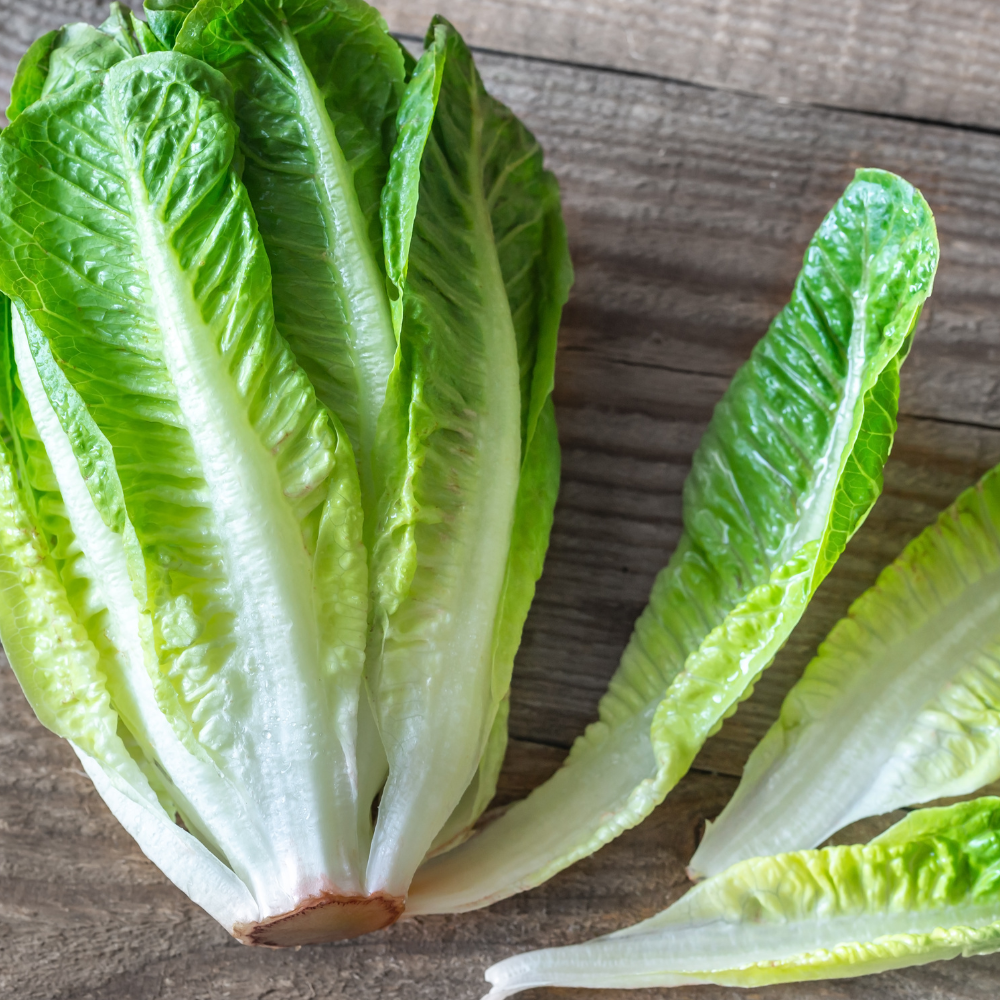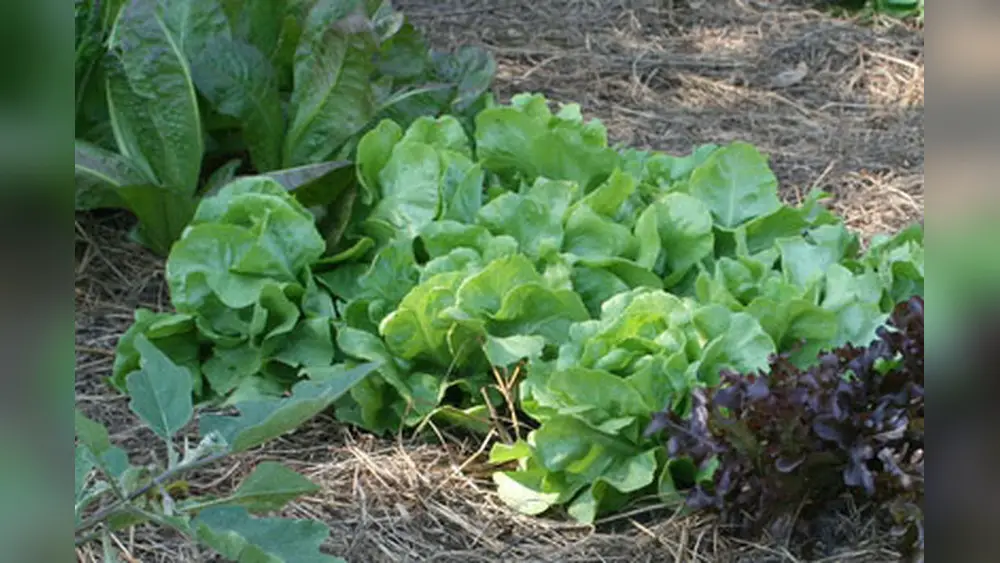Are you ready to enjoy fresh, crisp lettuce straight from your Florida garden? Knowing the best time to plant lettuce can make all the difference between a bountiful harvest and a disappointing crop.
In Florida’s unique climate, timing is everything—plant too early, and the heat will stunt your lettuce; plant too late, and you might miss the ideal growing window. This guide will help you discover exactly when and how to plant lettuce in Florida, so you can grow tender, flavorful leaves with ease.
Keep reading to unlock the secrets of successful lettuce gardening in your area and enjoy fresh salads all season long!

Credit: www.revivalgardening.com
Planting Seasons By Region
Planting lettuce in Florida requires attention to regional climate differences. The state’s long growing seasons vary from north to south. Each area has ideal windows to plant lettuce for best growth and yield. Understanding these regional schedules helps gardeners plan effectively.
Lettuce grows best in cooler weather. Avoid planting during Florida’s hot summer months. Instead, focus on fall, winter, and early spring. These seasons offer mild temperatures that prevent lettuce from bolting or becoming bitter.
North Florida Schedule
In North Florida, plant lettuce mainly from September to October. This region experiences cooler winters than other parts of the state. Lettuce planted in early fall can grow well before the coldest months. The best harvest time is usually January and February. Avoid planting after October, as frost can damage young plants.
Central Florida Timing
Central Florida offers a longer planting season. Start sowing lettuce seeds in September. Continue planting through March for multiple harvests. Mild winters and cooler early springs suit lettuce growth here. Gardeners can grow both leaf and romaine types successfully. Avoid summer planting due to heat stress.
South Florida Window
South Florida has the warmest climate in the state. Plant lettuce from September to January for best results. The mild winters allow lettuce to thrive without frost risk. Choose heat-tolerant varieties to extend the season. Late winter planting in February is less ideal due to rising temperatures.
Choosing Lettuce Varieties
Selecting the right lettuce variety is important for growing success in Florida. Lettuce types react differently to heat and humidity. Some types tolerate Florida’s warm climate better than others. Choosing heat-tolerant varieties helps extend your growing season. Different lettuce types also vary in texture and taste. Understanding these differences makes your garden more enjoyable.
Heat-tolerant Types
Heat-tolerant lettuce varieties can survive Florida’s warmer days. These types resist bolting and bitterness. They keep their flavor even in high temperatures. Examples include ‘Jericho’ and ‘Buttercrunch’. Plant these to avoid losing crops to heat stress.
Crisphead
Crisphead lettuce has a firm, crunchy texture. It forms tight, round heads. This type includes iceberg lettuce. Crisphead prefers cooler weather and may struggle in Florida heat. Plant in early fall or late winter for best results.
Butterhead
Butterhead lettuce is soft and tender. It forms loose, round heads with buttery leaves. Butterhead varieties tolerate mild heat better than crisphead. They work well in Florida’s cooler months. ‘Bib’ and ‘Boston’ are popular types.
Leaf
Leaf lettuce grows loose leaves without forming heads. It comes in many colors and textures. Leaf lettuce grows quickly and is easy to harvest. Many leaf types handle Florida’s warm climate well. Plant leaf lettuce for continuous harvests.
Romaine
Romaine lettuce has tall, firm leaves with a crunchy center. It is more heat tolerant than crisphead. Romaine holds up well in Florida’s mild winters. Varieties like ‘Parris Island’ thrive in the region. Romaine is perfect for salads and sandwiches.
Preparing Soil And Site
Preparing the soil and site is essential for growing healthy lettuce in Florida. Good soil and the right location help lettuce grow strong and resist heat stress. Lettuce prefers loose, rich soil that holds moisture but drains well. Choosing a proper site protects lettuce from harsh sun and heat, especially in Florida’s warm climate.
Soil Enrichment With Compost
Start by adding compost to the soil. Compost improves soil texture and adds nutrients. Spread a 2 to 3-inch layer of compost over the garden bed. Mix it well into the top 6 to 8 inches of soil. This process boosts soil fertility and helps retain moisture. Healthy soil encourages strong root growth and better lettuce leaves.
Selecting A Shaded Location
Pick a spot that gets morning sun but shade in the afternoon. Lettuce needs light but can wilt in hot, direct sun. Shade slows soil drying and protects leaves from scorching. Use trees, shade cloth, or garden structures to create partial shade. A cooler site helps lettuce stay crisp and fresh longer.
Watering And Care Tips
Proper watering and care are essential for healthy lettuce growth in Florida’s warm climate. Lettuce needs steady moisture to develop tender leaves and avoid bitterness. Overwatering or underwatering can harm the plants and reduce yield. Follow these simple watering tips to keep your lettuce thriving.
Consistent Moisture
Keep the soil evenly moist without soaking it. Lettuce roots are shallow and dry out quickly under the hot Florida sun. Water the plants regularly to prevent wilting and ensure steady growth. Dry soil can cause the leaves to turn bitter or tough. Mulching around the plants helps retain moisture and keeps the soil cool.
Morning Watering Benefits
Water lettuce early in the morning before the sun heats up. Morning watering reduces water loss due to evaporation. It also gives leaves time to dry during the day, lowering the risk of fungal diseases. Avoid watering in the evening to prevent excess moisture that can cause rot. Consistent morning watering supports healthy and fresh lettuce leaves.
Extending The Growing Season
Extending the growing season for lettuce in Florida helps gardeners enjoy fresh greens longer. Lettuce grows best in cool weather, but warm seasons can limit growth. Using smart techniques, you can plant and harvest lettuce beyond the usual months. This means more fresh salads and homegrown flavor year-round.
Two key methods help extend the season: succession planting and shade management. These simple strategies keep your lettuce healthy and productive despite Florida’s changing climate.
Succession Planting Strategy
Succession planting means planting small batches of lettuce every few weeks. This keeps the harvest steady and avoids large gluts of lettuce all at once. You start new seeds as older plants mature and are harvested. This method ensures fresh lettuce is always ready to pick.
Planting every 2 to 3 weeks during the cooler months works well in Florida. You can begin in September and continue through March in central and south Florida. In north Florida, start in September and finish by October to avoid hot weather. This strategy spreads out your crop, preventing waste and maximizing garden space.
Shade Management In Warmer Months
Lettuce can struggle under Florida’s strong sun during warmer months. Too much heat causes leaves to wilt, bolt, or become bitter. Providing shade helps keep lettuce cool and healthy.
Use shade cloths or plant lettuce under taller crops to reduce sun exposure. Shade during midday is most important, as this is when heat is strongest. This simple step slows down leaf damage and extends the growing period.
Combining shade with regular watering keeps lettuce crisp and fresh. Shade management lets you grow lettuce longer into spring and early summer without losing quality.

Credit: www.gardenersbasics.com
Avoiding Common Challenges
Growing lettuce in Florida can be rewarding but comes with common challenges. Avoiding these issues helps you get a healthy and abundant harvest. Focus on managing heat stress and preventing diseases to keep your lettuce thriving.
Preventing Heat Stress
Lettuce prefers cool weather. Florida’s heat can cause leaves to wilt or turn bitter. Plant lettuce during the cooler months, from September to March in central and south Florida. In north Florida, plant from September to October.
Use shade cloths or plant lettuce in spots with afternoon shade. This helps protect plants from harsh midday sun. Water lettuce early in the morning to keep soil moist and reduce heat damage. Choose heat-tolerant lettuce varieties to extend your growing season safely.
Disease Prevention
Warm, wet conditions encourage fungal diseases. Avoid overwatering to keep leaves dry. Water only the soil, not the leaves. Good air circulation around plants reduces disease risks. Space plants properly to allow airflow.
Remove any diseased leaves quickly to stop spread. Use clean tools to avoid contamination. Rotating your crops each year helps prevent soil-borne diseases. Healthy soil with compost also strengthens lettuce against infections.

Credit: www.gardenersbasics.com
Frequently Asked Questions
When Should You Plant Lettuce In Florida?
Plant lettuce in Florida from September to March in central and south regions. In north Florida, plant between September and October. Avoid hot summer months for best growth.
Is September Too Late To Plant Lettuce?
September is not too late to plant lettuce. In Florida, plant from September to March for best growth in cooler months.
What To Plant In October In Florida?
Plant cool-season vegetables like broccoli, cabbage, lettuce, carrots, and spinach in Florida in October. Start herbs such as cilantro and parsley. Focus on heat-tolerant varieties and provide shade to protect from strong sun. Maintain consistent moisture for best growth during this mild planting period.
Can I Plant Lettuce In October?
Yes, you can plant lettuce in October, especially in cooler regions. It thrives best in fall and early spring. Ensure soil stays moist and use heat-tolerant varieties in warmer areas. Succession planting helps maintain a continuous harvest. Avoid planting during hot summer months for optimal growth.
Conclusion
Plant lettuce in Florida during cooler months for best results. September to March works well in central and south Florida. North Florida gardeners should plant from September to October. Avoid summer heat to prevent poor growth and wilting. Use shade and water regularly to keep lettuce healthy.
Try planting new seeds every few weeks for a steady harvest. Enrich soil with compost to support strong plants. Following these simple tips helps you enjoy fresh, homegrown lettuce all winter long.

